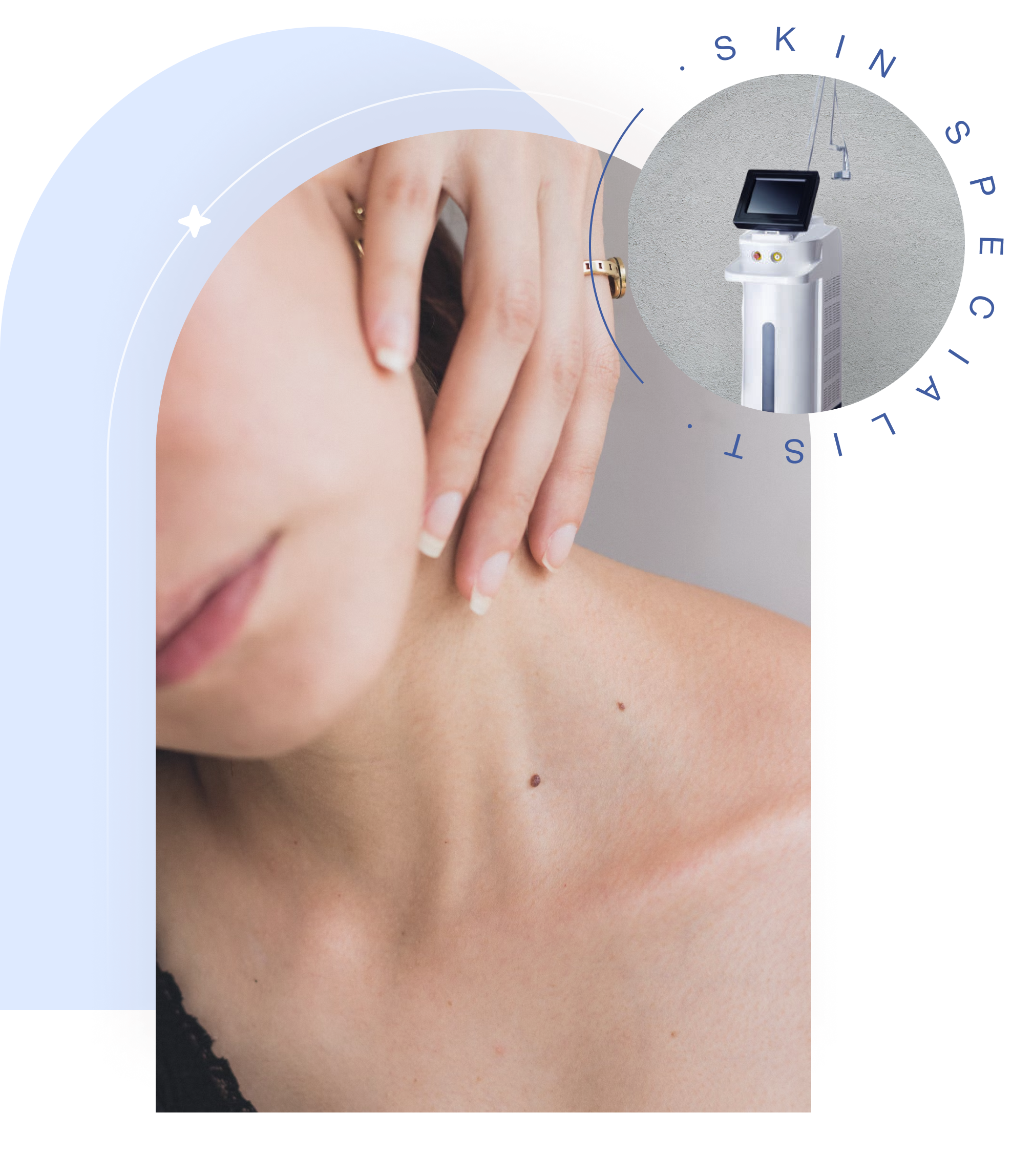Basal cell carcinoma (BCC) is the most common type of skin cancer in New Zealand, accounting for around 80% of all non-melanoma skin cancers.
Basal cell carcinoma (BCC) is a type of non-melanoma skin cancer that arises from basal cells located in the deepest layer of the epidermis. It is the most frequently diagnosed skin cancer in New Zealand, particularly in individuals with fair skin and a history of cumulative sun exposure.
BCC typically develops in areas of the body that receive the most ultraviolet (UV) radiation — such as the face, neck, scalp, and hands — but it can occur anywhere. The cancer tends to grow slowly and rarely spreads to other organs; however, it can become locally invasive and cause significant tissue destruction if left untreated.
While BCC is not usually life-threatening, early diagnosis and treatment are important to prevent cosmetic and functional complications.

(Available on Excel V and Excel V Plus)
Best for
Mild cases or isolated vessels.
How It Works
The long-pulse Nd:YAG laser emits energy at a wavelength absorbed by haemoglobin in blood vessels. This heat causes the targeted vessels to collapse, effectively treating both surface red veins and deeper blue veins.
Results
Treated vessels may disappear immediately or gradually fade over several weeks.
(Candela VBeam Perfecta, Excel V, Excel V Plus, Sciton BBL)
Best for
More severe cases or large areas of visible facial veins and redness, particularly in rosacea.
How It Works
This approach layers multiple vascular-targeting technologies in one session, including:
Results
Effectively reduces visible veins, diffuse redness, and facial flushing commonly seen in rosacea.
(Candela VBeam Perfecta, Excel V, Excel V Plus, Sciton BBL)
Best for
Stimulating collagen and vascular remodelling to reduce persistent skin redness.
How It Works
Often recommended in combination with vascular laser or BBL treatments to enhance skin healing, texture, and redness reduction.

BCC often appears as a pearly or flesh-coloured bump, a pink patch, or a sore that doesn’t heal. It may bleed, crust over, or slowly enlarge over time.

While BCC rarely spreads to other parts of the body, it can grow deeper into the skin and underlying tissues, leading to scarring, disfigurement, or functional damage — particularly on the face.

BCC tends to grow slowly, often over months or years. However, ignoring it can make treatment more complex, especially in cosmetically sensitive areas.

You can reduce your risk by protecting your skin from UV radiation. This includes using sunscreen daily, wearing protective clothing, and avoiding tanning beds.

Yes. People who’ve had BCC are at higher risk of developing more skin cancers in the future. Regular skin checks with a dermatologist help catch any new or recurring lesions early.